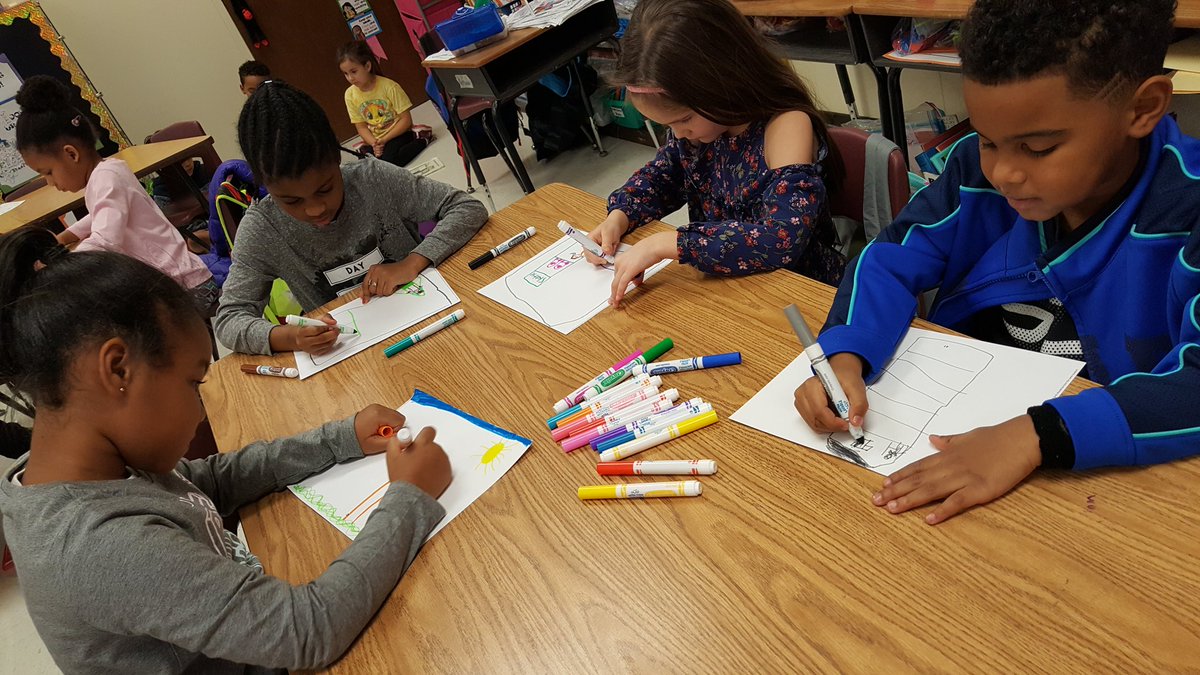
Of course, the first step to helping any student become a published author is getting them to write—which, as many things are, is often easier said than done. Motivation to write isn’t always easy to come by, even for full-time authors—let alone young writers still finding their literary feet. But for your elementary students, these three teaching strategies can be the key to revving up their creative engines and directing their boundless energy toward telling their own stories and sharing them with the world.
Strategy #1: Encourage Growth, Not Perfectionism
When teaching writing basics, it can be all too easy to get caught up in proofreading for grammatical errors and focusing the majority of your effort on correcting mistakes and misspellings. While it’s certainly crucial that your elementary students become familiar with the fundamental rules of writing early on, it’s also important to make sure you’re not simply training your students to see only what’s wrong with their writing. Seeing only the negatives, never the positives, is draining and demoralizing. To maximize enjoyment of the writing process, be sure to:
- Frame the discussion around the editing stage of the writing process in a positive light. Explain how revising is an opportunity to learn and grow, not merely a means of identifying problems with their writing. Remind them, too, that everyone makes mistakes, and that every author goes through this part of the process, no matter how famous or talented they may be.
- Encourage your students to create first, then edit later. If your students are worrying about the red marks they’re going to get on their papers before the first word is even written, writing is quickly going to start feeling more like a dreaded obligation than a joyous act of creation. When brainstorming or scribbling down a rough draft, encourage your students to explore and experiment with ideas without fear of failure. Let them know that it’s okay to have fun at this stage and get a little out there. Revisions are for after the first draft, not before!

The #proudauthors of Pineview Elementary are excited to show off their new books!
Are you Enjoying this Content?
Strategy #2: Make it Personal
Boring prompts or unrelatable topics can make the writing process dull. Do your best to choose subjects that will either speak to something close to your students’ hearts and experiences or excite their imaginations. Try to stick to topics that do at least one of the following:
- Address personal experiences or interests. Asking your students directly about something they care about, such as the best ice cream flavor they ever tasted or their favorite superhero, allows them to ease into writing by giving them familiar ground on which to build their response.
- Inspire thoughtful answers. Especially for students who have already mastered the basics, the best way to get (and keep!) your students writing is to provide them with a topic that inspires more than a cursory answer. Growing up, for example, is the perfect subject to get your students thinking (and writing!) about their own hopes and goals for the future at length.
- Foster creativity and originality. Imaginative writing prompts are the best way to allow your students to let loose and have fun with their writing. These don’t have to be fairy tale story starters or even fiction-based to qualify as imaginative, either. What matters is that the topic is something that motivates them to wonder, invent or explore.

Baker Elementary’s #proudauthors work hard on their classbook illustrations.
Strategy #3: Help Your Students Feel Like “Real Authors”
The number one strategy to motivate your students to write is to make them feel like their writing matters. Nothing is more frustrating to a writer, young or old, than feeling like your writing “doesn’t count.” Show your students how much you—and others—value their work by:
- Providing them with meaningful feedback. Take the time to guide your students through each step of the writing process. When grading their work, include commentary along with proofreading marks, and be sure to point out what they’ve done well as well as what can be improved. Include time for peer editing, when possible, to encourage your students to exchange ideas and inspire one another.
- Displaying and celebrating their hard work. Nothing says “real author” like actually publishing a professionally bound book. Seeing their writing in print is a powerful tool when it comes to convincing your students once and for all that their writing matters. You may also want to consider planning a publishing party to help your students see themselves as you see them: young authors capable of accomplishing just about anything.

#Proudauthors in Krum, TX celebrate their achievement with a popcorn and pajamas party!
Motivating Your Students to Find the Joy in Writing
Motivating your students to write at such an early age can seem like a bit of a challenge. But there are 14 million student authors out there who are living proof that it is possible—and, ultimately, deeply rewarding. By fostering creative growth, exploring relevant themes and helping them become proud, published authors, you can help your elementary students move past writer’s block and find their own personal writing motivation.
For other creative teaching tips and resources, we invite you to check out our online teacher’s lounge, and to order your free classbook publishing kit today!
Image sources: Lead image via Shutterstock; Images 1, 2, 3 via Twitter





